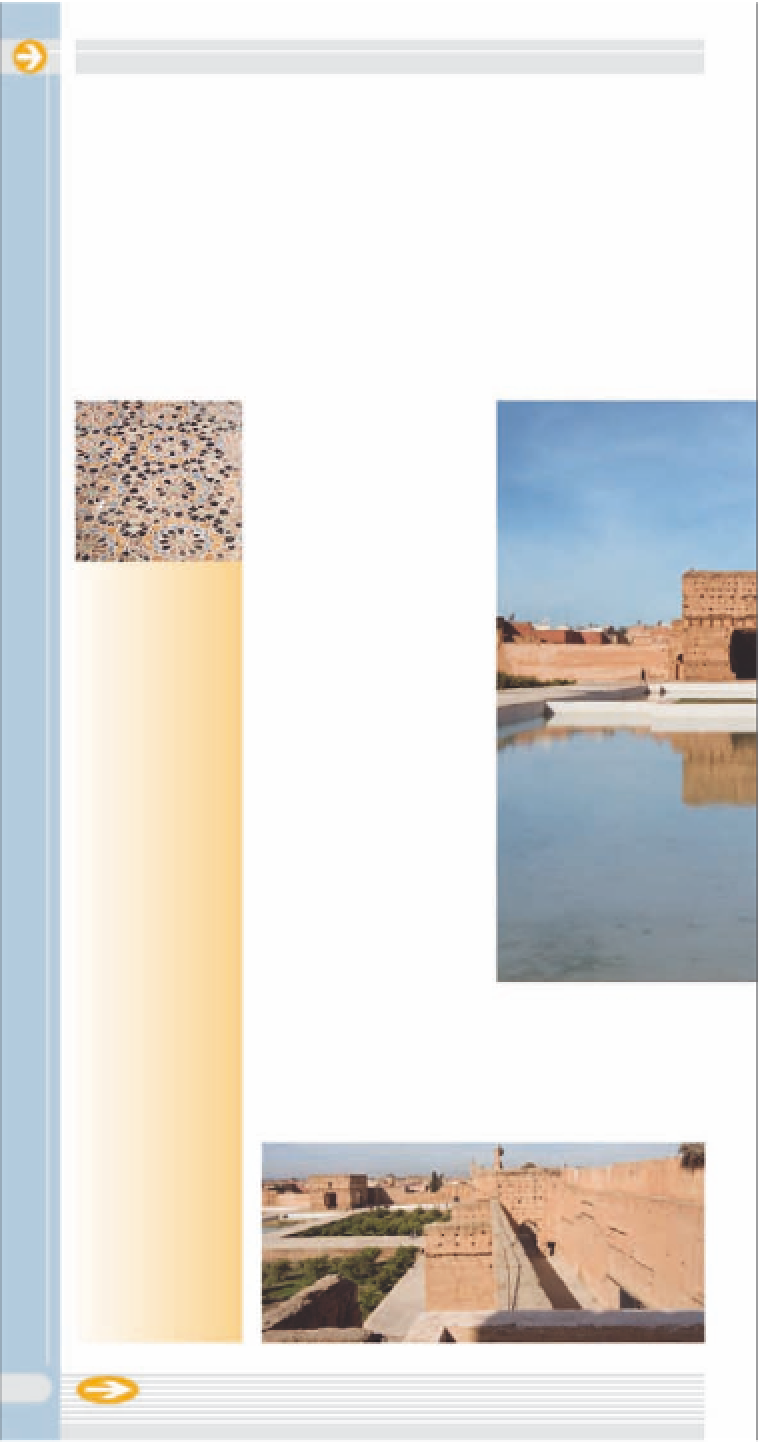Travel Reference
In-Depth Information
Badii Palace
It reputedly took armies of labourers and craftsmen 25 years to complete the
Badii Palace. When it was finished, it was said to be among the most
magnificent palaces ever constructed, with walls and ceilings encrusted with
gold and a massive pool with an island flanked by four sunken gardens. This
grand folly survived for all of a century before another conquering sultan
came along and stripped the place bare (a procedure that itself took 12
years) and carted the riches to his new capital at Meknès. All that survives
today are the denuded mudbrick ruins.
Top 10 Features
1 Sultan Ahmed El Mansour
2 The gatehouse
3 Basins and gardens
4 A sinister omen
5 Pavilion of 50 Columns
6 Mosque minbar
7 Underground passages
8 Rooftop terrace
9 Storks
0 Khaysuran Pavilion
!
Sultan Ahmed El
Mosaic, Koubba
El Khamsiniya
It's a big sight with
very little shelter,
so avoid visiting in
the heat of the after-
noon. It's a good idea
to bring some
bottled water.
Mansour
The palace was built by
Sultan Mansour who took
to the throne after the
Battle of Three Kings (1578),
in which the Moroccans
vanquished the Portuguese.
Great wealth was accrued
from the ransom of
Portuguese captives and
from further successful
campaigns in Mali. These
riches were poured into
building the Badii Palace.
@
The gatehouse
The rooftop terrace
of the Kozybar
(see p65)
on Place
des Ferblantiers is
the perfect vantage
point for a bird's-eye
view of the palace
walls and the storks
that nest upon it.
Koubba El Khamsiniya and basins
• Map K5
• Place des Ferblantiers,
Medina
• Open 8:45-11:45am,
2:30-5:45pm daily
• Adm 10 Dh; an
additional 10 Dh for
entry to the Koutoubia
minbar pavilion
The palace is approached along a narrow way
between twin high walls
(below)
. On its completion, the
gatehouse carried an inscription to the glories of the
palace. Now it is a ruin and entry to the complex is
through a breach in the crumbling walls.
24









































